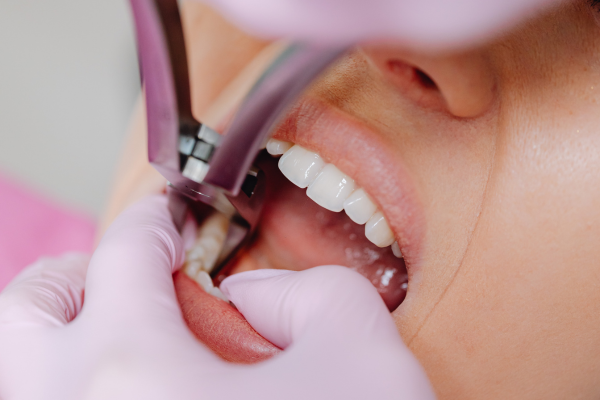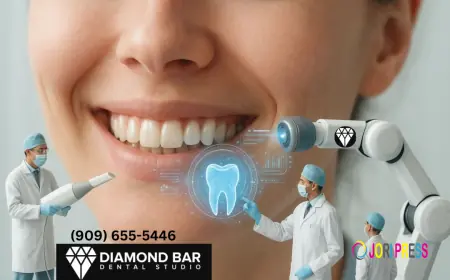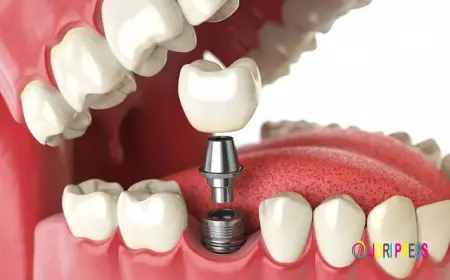Tooth Extraction Cost and Tooth Position: What to Expect
The position of a tooth in the mouth plays a major role in determining how an Tooth extraction cost is carried out.

The position of a tooth in the mouth plays a major role in determining how an Tooth extraction cost is carried out. A front tooth with a single, straight root is generally easier to remove compared to a molar in the back of the mouth, which may have multiple roots and a more complex anchoring in the jawbone. The deeper or more angled a tooth is, the more precision and effort are required for its removal. These differences in complexity directly influence how the procedure is planned and the resources used during treatment.
Front Teeth and Their Extraction Characteristics
Front teeth, such as incisors and canines, are usually more accessible due to their location and root structure. Since they are located in the visible part of the mouth, care is often taken to ensure minimal impact on surrounding tissues. This accessibility makes the process more straightforward, but additional measures for aesthetics and preservation of gum contour may sometimes be recommended. Even small details like this can contribute to the overall approach taken for the extraction.
Premolars and the Middle Zone Challenges
Premolars sit between the front teeth and molars, playing a role in both chewing and maintaining bite alignment. While their extraction is often simpler than removing molars, they can sometimes have roots that are angled or split, making them trickier to remove than they first appear. The positioning in the midsection of the mouth means dental professionals need to ensure stability in the surrounding teeth after removal.
Molars and Their Complexities
Molars, especially the upper and lower back ones, tend to present the greatest challenges due to their size, number of roots, and position at the back of the mouth. Lower molars may require more time because of the jawbone’s density, while upper molars are positioned close to sinus areas, requiring careful technique. These complexities often mean additional tools, preparation, and sometimes extra assistance during the extraction.
The Special Case of Wisdom Teeth
Wisdom teeth are a unique category because their position and angle can vary widely. Some grow straight and are easy to extract, while others are partially or fully impacted, requiring more advanced procedures. Their location at the very back of the mouth means access is limited, making them more time-consuming to remove. While not all wisdom teeth present challenges, their unpredictable positioning often requires extra planning and sometimes additional services.
How Position Influences Tools and Techniques
Different tooth positions call for different extraction tools and techniques. For example, front teeth may be removed with standard forceps and minimal bone adjustment, while back teeth might require sectioning or elevation to loosen them. Specialized instruments and approaches are used to ensure that teeth are removed without damaging surrounding structures. The more specialized the technique, the more preparation and resources are involved in the procedure.
Impact on Anesthesia Needs
The position of the tooth can also influence the choice of anesthesia. Teeth that are easier to access may only need standard local anesthesia, while deeper or more complex extractions might require additional sedation for patient comfort. While anesthesia is a standard part of extractions, the type and amount used can vary depending on tooth location and complexity.
Position-Related Healing Considerations
Healing time after an extraction can also be affected by tooth position. A front tooth extraction might heal relatively quickly due to easier access and less dense bone structure, while molar or wisdom tooth sites can take longer. Dental professionals may recommend specific aftercare routines based on the position to ensure proper healing. Even though the healing process is separate from the extraction itself, these considerations are part of the planning stage.
Planning for Multi-Tooth Extractions
When more than one tooth is being removed, position becomes even more important in determining the sequence of extractions and the overall approach. Strategic planning helps maintain bite balance and supports faster recovery. For example, removing two adjacent molars may require a slightly different technique than removing two teeth in opposite areas of the mouth.
The Role of Position in Procedure Duration
Time spent on an extraction often increases with the complexity of the tooth’s position. Back teeth, teeth with unusual root shapes, or teeth in tight spaces may require more careful maneuvering. The duration of the procedure can be a factor in determining the overall amount charged, since longer treatments may involve more chair time, equipment use, and patient management.
Why Tooth Extraction Cost in Dubai Is Influenced by Position
Tooth Extraction Cost in Dubai can vary based on tooth position because the level of difficulty changes with location, root structure, and accessibility. Removing a front tooth is often faster and less complex than extracting a molar or impacted wisdom tooth, but every case is unique. Understanding how position affects the process allows patients to better anticipate what to expect both in the procedure and in the cost.
Additional Services Linked to Position
Sometimes, tooth position naturally leads to the need for additional services. For example, an extraction near a sinus area might require extra imaging, while deeply set molars could need bone smoothing. These services add steps to the process, making the extraction more tailored to the individual case.
How Position Affects Patient Comfort
Tooth position is not just a technical consideration—it also influences the patient experience. Teeth that are easy to access allow for quicker extractions and less strain during the procedure. Back teeth often require longer sessions with the mouth open, which can be tiring for the patient. Dental teams often adapt their approach to make these extractions as comfortable as possible.
Long-Term Oral Health Considerations
The position of the extracted tooth also determines the type of follow-up care needed. Losing a front tooth can affect speech and appearance, often prompting discussions about replacement options. Molars, on the other hand, impact chewing efficiency, so their loss may require different long-term solutions. Recognizing the role position plays in future dental planning helps patients make informed choices before extraction.
Final Thoughts on Position and Expectations
Tooth position plays a major role in shaping the extraction process, the complexity of the procedure, and the resources involved. Whether it’s a front tooth, a premolar, a molar, or a wisdom tooth, the location determines everything from the tools used to the time spent in the chair. In areas where pricing differences are influenced by these factors—such as with Tooth extraction cost in Dubai—understanding the role of position helps patients prepare both practically and financially. Knowing what to expect makes the entire process smoother and more predictable, ensuring better results for both comfort and long-term oral health.
What's Your Reaction?
 Like
0
Like
0
 Dislike
0
Dislike
0
 Love
0
Love
0
 Funny
0
Funny
0
 Angry
0
Angry
0
 Sad
0
Sad
0
 Wow
0
Wow
0




















































